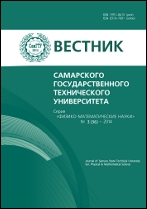|
Differential Equations and Mathematical Physics
Bigravity in Hamiltonian formalism
V. O. Soloviev
Institute for High Energy Physics, Protvino, Moskovskaya obl., 142281, Russian Federation
(published under the terms of the Creative Commons Attribution 4.0 International License)
Keywords:
gravitation theory, bimetric theories, ADM formalism, Monge–Ampere equation, constraint Hamiltonian systems.
Original article submitted 16/XII/2014
revision submitted – 19/II/2015
Citation:
V. O. Soloviev, “Bigravity in Hamiltonian formalism”, Vestn. Samar. Gos. Tekhn. Univ., Ser. Fiz.-Mat. Nauki [J. Samara State Tech. Univ., Ser. Phys. Math. Sci.], 19:1 (2015), 105–116
Linking options:
https://www.mathnet.ru/eng/vsgtu1388 https://www.mathnet.ru/eng/vsgtu/v219/i1/p105
|

| Statistics & downloads: |
| Abstract page: | 418 | | Full-text PDF : | 238 | | References: | 61 |
|




 Contact us:
Contact us: Terms of Use
Terms of Use
 Registration to the website
Registration to the website Logotypes
Logotypes










 Citation in format
Citation in format 